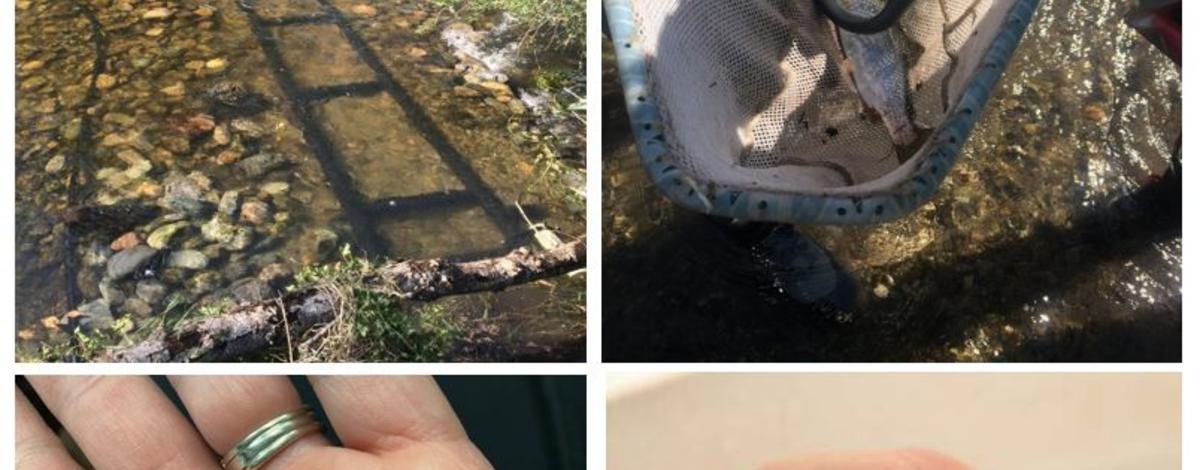Passive Integrated Transponder tags are commonly used to monitor fish distribution and movement. Commonly known as a "PIT" tag, it is similar to a microchip and about the size of a grain of rice. In adult fish, the tag is typically inserted into the back of the fish near the dorsal fin, and inserted into the body cavity of juveniles. Tag insertions are done through the use of a sterile needle with a PIT-tag injector.
Each PIT tag has a unique tag code (a series of numbers and letters) that allows for individual fish identification. After the tag is inserted, data such as species, length, and weight is recorded, and the fish is then released and tracked by its unique code.
Tracking fish with PIT tags and PIT arrays is different from tracking big game animals with radio collars. Radio-collared animals can be tracked at most locations using satellites or handheld receivers. PIT tags do not have a power source, so they require activation from an instream antenna, which are referred to arrays. PIT-tagged fish must pass within a few feet of an array in order to be activated and detected. Therefore, locating PIT-tagged fish is dependent on array locations. Once the fish is detected, the fish’s unique PIT-tag code, date and time is uploaded into a program called Columbia Basin PIT Tag Information System.
PIT array locations are selected so that fish distribution and movement can be monitored for a variety of management reasons. A prime example of a system with a network of arrays is the Lemhi River basin, located in the upper Salmon River watershed. The Lemhi River has four arrays installed in the main-stem river and additional arrays installed at the mouth of its various tributaries. Fish detections at these arrays provide biologist with information that can assess fish survival, movement and distribution, spawn timing, abundance, and specific habitat use.
In the Lemhi River basin, PIT arrays are commonly used to better understand where juvenile fish overwinter, and how habitat in those specific locations is related to overwinter survival. Overall, PIT tagging fish is a common practice that provides important information for fisheries management.
The PIT-tag database stores information for all tagged fish in the Columbia River basin. Upon tagging a fish, the biologist will upload all information associated with that unique PIT tag. This includes species, the location of where the fish was tagged, the release location (may or may not be different from tagging location) and the length and weight of the fish when tagged. This information will be associated with the fish every time the fish is detected at an array, which are the most common way to detect a PIT-tagged fish, but there are other methods. If a PIT-tagged fish is captured in a rotary screw trap, during electrofishing, or gillnetting, the biologist will use a handheld tag reader to scan the fish for a tag.
Typically, the recaptured fish will be measured for length and weight and that information along with the PIT-tag code will be uploaded into the PIT tag database. The database will track the PIT-tag code from the day the individual fish was tagged through all sequential detections at arrays or recaptures. Each PIT-tagged fish can have a lengthy history of locations and times it was detected that allows biologists to track fish over long time periods and at great distances from their original tagging locations.
PIT-tag arrays are distributed throughout the Pacific Northwest so biologists can track Chinook salmon and steelhead back and forth between freshwater and saltwater and through multiple states. This includes large rivers, small streams and side channels. Arrays can be used to observe fish passage at large dams, as well as monitoring fish screens that are designed to bypass fish around irrigation diversions.
For more information on PIT tagging, please see these related stories:
https://idfg.idaho.gov/blog/2021/04/smolt-monitoring-project-week-6-pit-tagging
https://idfg.idaho.gov/blog/2020/04/wild-adult-steelhead-returns-detections-new-tributary-pit-array

